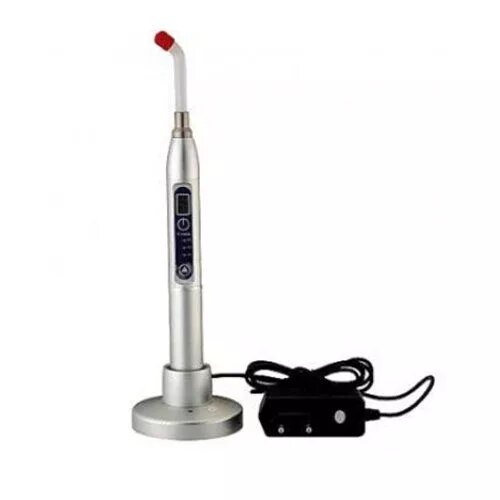

Philips Respironics Trilogy 100
Inhouse product
-
Soundless Dental compressor
৳15,300.00 -
Dental Curing Light 100A Tulip
৳3,150.00 -
CHEM-7 Semi Auto Bio Chemistry Analyzer
৳195,000.00 -
ntfs beauty facial steamer
৳1,199.00
Product Description
With a streamlined user interface and Respironics ‘ proven BiPAP technology, Trilogy 100 allows invasive and non-invasive home ventilation less complicated for greater flexibility. Its lightweight architecture and internal and detachable batteries allow portability for on-the-go patients.
At its heart, the Trilogy100 portable ventilator is compact, flexible and simple to use. Trilogy100 makes invasive and non-invasive care less difficult for a wide variety of adult and pediatric patients, due to its lightweight and proven technology.
Connected
Keeping care teams in the know
Trilogy is now linked to Treatment Orchestrator, our cloud-based patient engagement system which is compliant with HIPAA. Linked Trio helps clinicians provide consistent respiratory treatment, achieve efficiencies, potentially eliminate unnecessary home visits, increase continuity of care, streamline workflow and prioritize patient needs with the ability to share data wirelessly and remotely.
Reliable and portable
Continuous respiratory support for added freedom and mobility
Trilogy offers respiratory assistance, up to 24 hours a day, to meet the medical needs. Trilogy is compact with internal, hot-swappable detachable, and external batteries to ensure continuous ventilation for greater flexibility and mobility. The simple to use the carrying bag is wheelchair mountable and built to keep the device accessible.
Flexible
Easy to use and adaptable for your patients’ changing needs
Trilogy is designed to better maximize care with easy-to-read and navigate displays, various Rx configurations, and on-screen waveforms. The pressure-and volume-control functions of Trilogy allow you to use one tool for more types of therapy. The opportunity for patients requiring different ventilation rates to use several modes allows for greater versatility in treatment.
Specifications
| Product Name | Philips Respironics Ventilator |
| Model | Trilogy 100 |
| Brand | Philips |
| Environmental | |
| Temperature | 5°C – 40°C |
| Relative humidity | 15% – 95% |
| Atmospheric pressure | 110 kPa to 60 kPa |
| Physical | |
| Weight | 11 lbs, 5 kgs |
| Size | 6.6″L x 11.2″W x 9.3″H (16.68 cm L x 28.45 cm W x 23.52 cm H) |
| Controls | |
| Circuit types | Active with PAP, passive |
| Ventilation types | Volume control, pressure control, bilevel |
| Volume modes | AC, SIMV (w/PS), CV |
| Pressure modes | CPAP, S, S/T, T, PC-SIMV (w/PS) |
| IPAP | 4 – 50 cm H20 |
| EPAP | 0 – 25 cm H20 for active circuits |
| 4 – 25 cm H20 for passive circuits | |
| CPAP | 4 – 20 cm H20 for passive circuits |
| PEEP | 0 – 25 cm H20 for active circuits |
| 4 – 25 cm H20 for passive circuits | |
| Pressure support differential | 0 – 30 cm H20 |
| Measured patient parameters | |
| Tidal volume | 50 – 2000 ml |
| Breath rate | 0 – 60 for AC mode |
| 1 – 60 for all other modes | |
| Inspiratory time | 0.3 – 5.0 secs |
| Rise time | 1 – 6 |
| Ramp start pressure | 0 – 25 cm H20 for active circuits |
| 4 – 25 cm H20 for passive circuits | |
| 4 – 19 cm H20 in CPAP mode | |
| Ramp length | Off, 5 – 45 minutes |
| Flex | Off, 1 – 3 |
| Flow trigger sensitivity | 1 – 9 l/min |
| Flow cycle | 10% – 40% |
| Apnea rate | 4 – 60 BPM |
| Tidal volume | 0 – 2000 ml |
| Minute ventilation | 0 – 99 l/min |
| Leak rate | 0 – 200 l/min |
| Respiratory rate | 0 – 80 BPM |
| Peak inspiratory flow | 0 – 200 l/min |
| Peak inspiratory pressure | 0 – 99 cm H20 |
| Mean airway pressure | 0 – 99 cm H20 |
| Percentage patient triggered breaths | 0 – 100% |
| 9.9:1 to 1:9.9 | |
| Alarms | |
| Circuit disconnect | Off, 10 – 60 secs |
| Apnea | Off, 10 – 60 secs |
| High tidal volume | Off, 50 – 2000 ml |
| Low tidal volume | Off, 50 – 2000 ml |
| High minute ventilation | Off, 1 – 99 l/min |
| Low minute ventilation | Off, 1 – 99 l/min |
| High respiratory rate | Off, 4 – 80 BPM |
| Low respiratory rate | Off, 4 – 80 BPM |




.png)









